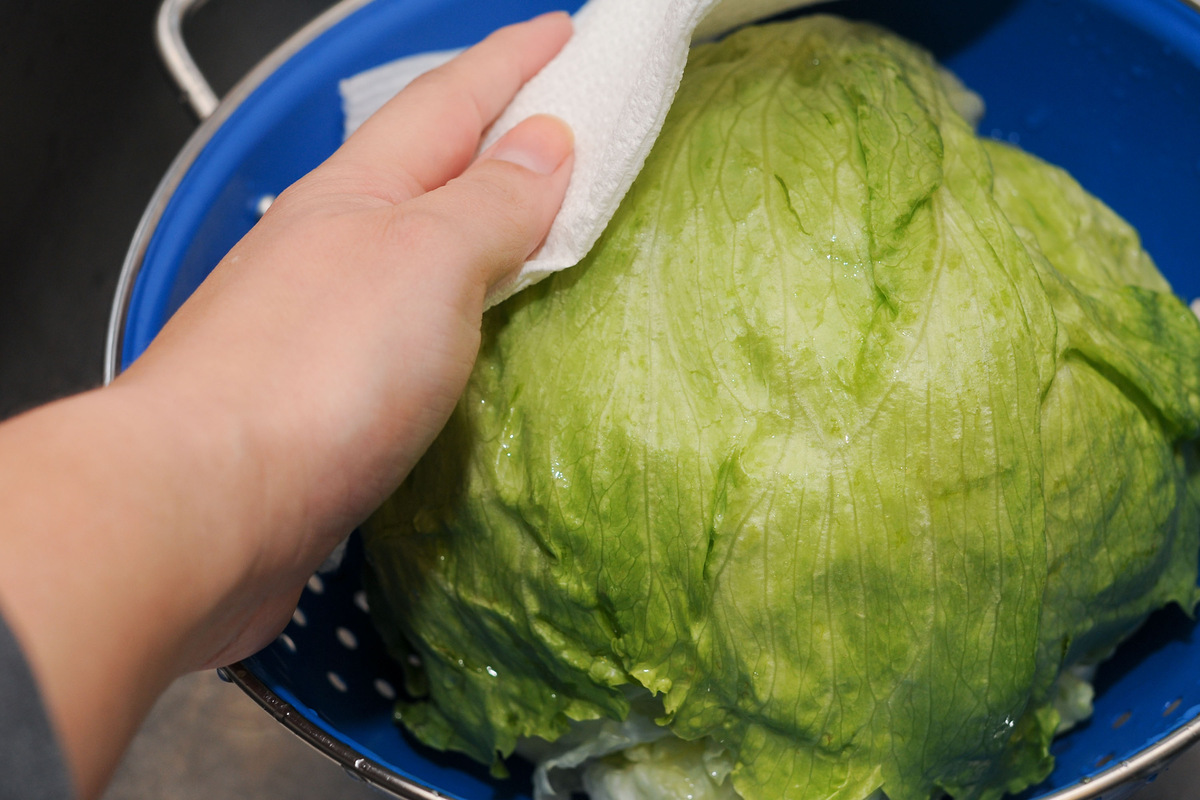

Articles
How To Store Iceburg Lettuce
Modified: February 27, 2024
Learn the best methods for storing iceberg lettuce in this informative article. Keep your lettuce fresh and crisp for longer with our helpful tips and tricks.
(Many of the links in this article redirect to a specific reviewed product. Your purchase of these products through affiliate links helps to generate commission for Storables.com, at no extra cost. Learn more)
Introduction
Welcome to this comprehensive guide on how to properly store iceberg lettuce. Iceberg lettuce is a versatile and nutritious leafy green vegetable that is a staple in many salads and dishes. It is important to store iceberg lettuce correctly to maintain its freshness and crispness for longer periods.
Proper storage not only extends the shelf life of iceberg lettuce but also helps preserve its nutritional value and flavor. Whether you’re a home cook or a professional chef, knowing how to store iceberg lettuce will ensure that you always have fresh and crisp lettuce on hand for your culinary creations.
In this article, we’ll discuss the benefits of storing iceberg lettuce properly, how to choose the freshest lettuce, and various methods to maximize its shelf life. By following these tips and techniques, you’ll be able to enjoy the crisp texture and vibrant taste of iceberg lettuce even days after purchasing it.
So, let’s dive in and discover the secrets to storing iceberg lettuce to perfection!
Key Takeaways:
- Properly storing iceberg lettuce extends its shelf life, retains its nutritional value, preserves its texture and flavor, and offers convenience for meal preparation, reducing waste and saving money.
- Choosing fresh lettuce, cleaning and drying it thoroughly, and using proper wrapping and refrigeration techniques are essential for maintaining the crispness and freshness of iceberg lettuce.
Read more: How To Store Lettuce
Benefits of Storing Iceberg Lettuce Properly
Properly storing iceberg lettuce not only helps in preserving its freshness and flavor but also offers several other benefits. Here are some of the key advantages of storing iceberg lettuce properly:
- Extended Shelf Life: By following the right storage techniques, you can significantly prolong the shelf life of iceberg lettuce. This means that you can enjoy fresh and crisp lettuce for a longer period, reducing waste and saving money in the process.
- Retains Nutritional Value: Iceberg lettuce is packed with essential vitamins, minerals, and antioxidants. When stored properly, it retains its nutritional value, ensuring that you get all the health benefits it offers. This includes nutrients like vitamin C, vitamin K, and folate, which contribute to a healthy immune system, bone health, and cell function.
- Preserves Texture: Iceberg lettuce is known for its crispy and crunchy texture, which adds a refreshing element to salads and sandwiches. Proper storage methods help preserve this texture, ensuring that the lettuce stays crisp even after storing it for several days.
- Enhanced Flavor: Fresh lettuce has a naturally mild and slightly sweet flavor. By storing iceberg lettuce properly, you can maintain its natural taste and prevent it from wilting or developing a bitter taste due to improper storage conditions.
- Convenience: When you have properly stored iceberg lettuce in your refrigerator or freezer, it becomes readily accessible whenever you need it. This convenience makes meal preparation quicker and easier, allowing you to incorporate healthy greens into your meals effortlessly.
By understanding and implementing the proper techniques for storing iceberg lettuce, you can enjoy these benefits and make the most of this versatile and nutritious vegetable.
Choosing Fresh Iceberg Lettuce
When it comes to storing iceberg lettuce, choosing fresh and high-quality lettuce is the crucial first step. Here are some tips to help you select the freshest iceberg lettuce:
- Appearance: Look for iceberg lettuce heads that have crisp, vibrant green outer leaves. Avoid lettuce heads with discolored or wilted leaves, as these are signs of age and deterioration.
- Weight: Pick up the lettuce head and feel its weight. Fresh iceberg lettuce should feel dense and heavy for its size. Avoid lettuce heads that feel light or hollow, as they may have dried out and lost their moisture.
- Texture: Gently squeeze the lettuce head. It should feel firm and have a slight spring to it. Avoid lettuce heads that feel too soft or mushy, as they are likely past their prime.
- Smell: Take a sniff near the base of the lettuce head. It should have a mild, fresh, and slightly sweet aroma. Avoid lettuce heads with a pungent or rotten smell, as this indicates spoilage.
- Stalk: Examine the bottom of the lettuce head where it was cut. The stalk should be fresh and moist, without any signs of browning or sliminess.
It’s important to note that pre-packaged lettuce mixes or bagged lettuce may not offer the same level of freshness and quality as whole lettuce heads. If possible, opt for whole iceberg lettuce heads as they tend to stay fresh longer.
By selecting fresh and high-quality iceberg lettuce, you are setting the foundation for successful storage and optimal taste and texture. Keep these tips in mind the next time you are at the grocery store or farmers market to ensure you pick the best lettuce for your salads and dishes.
Cleaning Iceberg Lettuce
Properly cleaning iceberg lettuce is an essential step before storing it. Cleaning removes dirt, debris, and any potential bacteria that may be present on the leaves. Here’s a step-by-step guide on how to clean iceberg lettuce:
- Separate the Leaves: Gently separate the leaves of the iceberg lettuce head. This allows for better cleaning and ensures that every leaf is thoroughly washed.
- Rinse Under Cold Water: Hold each lettuce leaf under cold running water. Rinse all sides of the leaf, using your fingers to gently rub away any dirt or residue on the surface. Ensure that all the leaves are completely clean.
- Inspect for Remaining Debris: After rinsing, carefully inspect each lettuce leaf for any remaining dirt or debris. If you spot any, gently remove it using your fingers or a soft brush.
- Trim the Core: Using a sharp knife, trim off the core or stem end of each lettuce leaf. This helps to remove any tough or bitter parts and ensures that the lettuce is ready for consumption.
- Pat Dry: After cleaning, gently pat each lettuce leaf dry using a clean kitchen towel or paper towels. It’s important to remove excess moisture to prevent premature wilting and decay when storing.
Note: It is not recommended to soak iceberg lettuce in water as it can lead to waterlogging and loss of crispness.
By following these steps, you’ll have clean and ready-to-use iceberg lettuce that is free from dirt and debris. Properly cleaned lettuce not only ensures food safety but also contributes to maintaining the quality and freshness of the lettuce during storage.
Drying Iceberg Lettuce
After cleaning iceberg lettuce, it’s essential to dry it thoroughly before storing to prevent excess moisture, which can lead to wilting and spoilage. Here are a few methods to effectively dry iceberg lettuce:
- Salad Spinner: Use a salad spinner to remove excess water from the lettuce leaves. Place the lettuce leaves in the spinner basket, close the lid, and spin it gently. The centrifugal force will help remove the water droplets. Empty the collected water and pat the lettuce leaves dry with paper towels if needed.
- Paper Towels: Lay out several layers of paper towels on a clean surface. Place the washed lettuce leaves in a single layer on top of the paper towels. Gently pat the leaves dry with another layer of paper towels, absorbing any remaining moisture.
- Air Drying: If time permits, you can air dry the lettuce leaves. After rinsing, shake off excess water from the leaves and place them on a clean kitchen towel or a wire rack. Leave them undisturbed for a few hours or until they are completely dry.
- Refrigerate Uncovered: If you’re planning to use the lettuce immediately or within a few hours, you can refrigerate the wet lettuce leaves uncovered on a plate or tray. The cold temperature of the refrigerator will help evaporate the excess moisture.
Regardless of the drying method you choose, it’s important to ensure that the iceberg lettuce leaves are thoroughly dry before storing them. Excess moisture can promote bacterial growth and accelerate spoilage.
Remember, the goal is to have clean, dry, and crispy lettuce leaves for the best storage results.
To store iceberg lettuce, wrap it in a paper towel and place it in a resealable plastic bag. Squeeze out excess air and store in the crisper drawer of the refrigerator. This will help keep the lettuce fresh and crisp for longer.
Read more: How To Store Lettuce For Winter
Wrapping Iceberg Lettuce
Proper wrapping is a key step in storing iceberg lettuce to maintain its freshness and prevent it from wilting. Here are a few effective methods for wrapping iceberg lettuce:
- Plastic Wrap: Take a clean and dry sheet of plastic wrap or cling film. Gently wrap each individual lettuce leaf or a small bundle of leaves with the plastic wrap. Make sure the entire surface of the lettuce is covered, including the cut ends. This helps to retain moisture and prevent the lettuce from drying out.
- Reusable Food Wraps: If you prefer an eco-friendly option, you can use reusable food wraps made from fabric coated in beeswax or silicone. Place the lettuce leaves or bundle on the wrap and fold it over, securing the edges. This breathable wrap allows the lettuce to stay fresh while reducing plastic waste.
- Airtight Containers: Another option is to store the lettuce in airtight containers. Place the cleaned and dried lettuce leaves in a container with a tight-fitting lid. Make sure the container is large enough to accommodate the size of the lettuce without compacting it too tightly. This method helps maintain the moisture levels and prevents the lettuce from getting crushed.
- Zip-Top Bags: You can also use zip-top bags to store iceberg lettuce. Place the lettuce leaves in a bag and gently press out any excess air before sealing it. This method helps create a mini greenhouse effect and maintains the right level of humidity for the lettuce.
When wrapping iceberg lettuce, it’s important to avoid wrapping it too tightly, as this can damage the leaves. The wrapping should provide a protective barrier without squeezing or crushing the lettuce.
Choose the wrapping method that works best for you based on convenience and availability. Whichever method you choose, it will help preserve the crispness and freshness of the iceberg lettuce during storage.
Storing Iceberg Lettuce in the Refrigerator
The refrigerator is the ideal place to store iceberg lettuce as it helps maintain a cool and consistent temperature, which slows down the deterioration process. Follow these steps to store iceberg lettuce in the refrigerator:
- Clean and Dry: Before refrigerating, make sure the lettuce leaves are clean and dry. Follow the cleaning and drying methods mentioned earlier in this article.
- Wrap Individually: Wrap each lettuce leaf or bundle of leaves individually with plastic wrap or place them in airtight containers or resealable bags. This helps maintain the freshness and prevents the lettuce from absorbing odors from other foods in the refrigerator.
- Choose the Right Spot: Find a dedicated spot in the refrigerator to store the wrapped lettuce. The crisper drawer is an ideal location, as it provides slightly higher humidity levels. Alternatively, you can place the lettuce on a shelf, making sure it’s not squished or compressed by other items.
- Optimal Temperature: Set the refrigerator temperature between 36°F (2°C) and 40°F (4°C) to keep the lettuce crisp and fresh. Avoid placing the lettuce near the back of the refrigerator where it may freeze due to colder temperatures.
- Check Regularly: Periodically check the lettuce for any signs of deterioration, such as wilting, browning, or sliminess. Remove any spoiled leaves immediately to prevent them from affecting the rest of the lettuce.
When stored properly in the refrigerator, iceberg lettuce can remain fresh for up to 7-10 days. However, it’s best to use it within the first few days for the best quality and taste.
Note: If you have used a reusable food wrap, make sure to wash and dry it thoroughly before reusing it.
Now that you know how to store iceberg lettuce in the refrigerator, you can enjoy fresh and crispy lettuce whenever you need it for your salads, wraps, and other delicious recipes.
Storing Iceberg Lettuce in the Freezer
While iceberg lettuce is best enjoyed fresh, there may be times when you have an abundance of lettuce and want to preserve it for later use. Freezing is an option, although it does change the texture of the lettuce. Here’s how to store iceberg lettuce in the freezer:
- Clean and Dry: Start by thoroughly cleaning and drying the lettuce leaves using the methods described earlier. Ensure that the leaves are completely dry to prevent ice crystals from forming.
- Preparation: Cut the lettuce into bite-sized pieces or tear them into smaller, manageable pieces. This will make it easier to use the lettuce later on.
- Blanching: Blanching helps preserve the color and texture of the lettuce. Bring a pot of water to a boil and have a bowl of ice water ready. Submerge the lettuce leaves in boiling water for about 30 seconds to 1 minute, then quickly transfer them to the ice water to stop the cooking process. Drain the lettuce thoroughly after blanching.
- Pat Dry: Gently pat dry the blanched lettuce leaves using paper towels. Removing excess moisture before freezing helps prevent ice crystals from forming and preserves the quality of the lettuce.
- Freeze: Arrange the lettuce leaves in a single layer on a baking sheet or tray lined with parchment paper. Place the tray in the freezer for a few hours or until the leaves are frozen solid. Freezing them separately first prevents the leaves from sticking together.
- Pack and Seal: Once the lettuce leaves are frozen, transfer them into freezer-safe bags or airtight containers. Remove as much air as possible before sealing to minimize freezer burn. Label the containers with the date for future reference.
Frozen iceberg lettuce is best used in cooked dishes like soups, stews, and stir-fries, as freezing can cause the lettuce to become wilted and lose its crispness. While the texture may change, the flavor and nutritional value can still be retained.
Remember to use the frozen lettuce within 3 to 4 months for the best quality. Thaw the desired amount of lettuce in the refrigerator before using it in your recipes.
Freezing iceberg lettuce is a good way to minimize waste and have a readily available supply of lettuce for cooking purposes, keeping in mind that the texture may not be the same as fresh lettuce.
Tips for Extending the Shelf Life of Iceberg Lettuce
To make the most of your iceberg lettuce and extend its shelf life, here are some helpful tips to keep in mind:
- Store Unwashed: Avoid washing the lettuce before storing it. Moisture can accelerate decay, so it’s best to wash the lettuce just before use.
- Remove Damaged Leaves: Check the lettuce regularly and remove any damaged or wilted leaves. This helps prevent the spread of decay to the rest of the lettuce.
- Avoid Cutting: It’s best not to cut or chop the lettuce until you’re ready to use it. Cutting exposes more surface area, making it more prone to moisture loss and wilting.
- Keep Moisture in Check: Excess moisture can lead to the development of mold and bacterial growth. Ensure the lettuce is properly dried before storage and avoid storing it in a damp environment.
- Separate Leaves: If you have loose leaves of iceberg lettuce, separate them before storing. This allows air to circulate and minimizes the risk of moisture buildup.
- Avoid Ethylene Producing Fruits: Ethylene gas speeds up the ripening process and can cause lettuce to deteriorate faster. Keep lettuce away from ethylene-producing fruits like apples, avocados, and bananas.
- Refrigerate Leftover Cut Lettuce: If you have leftover cut lettuce, place it in an airtight container or wrap it tightly with plastic wrap before refrigerating. This helps slow down moisture loss and keeps the lettuce fresh for a little longer.
- Use a Leafy Greens Storage Bag: Consider investing in a specialized leafy greens storage bag. These bags are designed to regulate humidity levels and extend the shelf life of lettuce and other greens.
- Rotate Your Stock: When purchasing new lettuce, make sure to use the older lettuce first. By rotating your stock, you avoid the risk of having older lettuce spoil before it’s used.
Following these tips can help you maximize the shelf life of iceberg lettuce and reduce waste. By taking proper care and storing the lettuce correctly, you can enjoy fresh and crisp lettuce for an extended period.
Read more: How To Store Living Lettuce
Conclusion
Congratulations! You are now equipped with the knowledge and techniques to properly store iceberg lettuce and extend its shelf life. By following these tips, you can ensure that your lettuce stays fresh, crisp, and flavorful for longer periods, reducing waste and saving money in the process.
Remember to start with fresh and high-quality lettuce, choosing heads that are vibrant in color and firm to the touch. Clean the lettuce thoroughly, removing any dirt and debris, and dry it properly to prevent excess moisture. Wrapping the lettuce individually, whether in plastic wrap, reusable food wraps, or airtight containers, helps maintain its freshness and protect it from external influences.
When storing iceberg lettuce in the refrigerator, find a dedicated spot with the right temperature and periodically check for any signs of spoilage. If you have an abundance of lettuce, freezing can be an option, although it may alter the texture. Blanching and proper packaging before freezing will help preserve its quality.
Lastly, apply the tips shared to extend the shelf life of your iceberg lettuce, such as removing damaged leaves, keeping moisture in check, and separating the leaves if needed. Avoid storing lettuce alongside ethylene-producing fruits and consider using specialized storage bags designed for leafy greens.
By implementing these storage techniques, you can enjoy fresh, crisp, and nutritious iceberg lettuce in your salads, sandwiches, wraps, and various culinary creations. With a little care and attention, you can make the most of this versatile leafy green and make every meal a delight.
So go ahead, stock up on iceberg lettuce, and store it like a pro. Your future salads will thank you!
Frequently Asked Questions about How To Store Iceburg Lettuce
Was this page helpful?
At Storables.com, we guarantee accurate and reliable information. Our content, validated by Expert Board Contributors, is crafted following stringent Editorial Policies. We're committed to providing you with well-researched, expert-backed insights for all your informational needs.
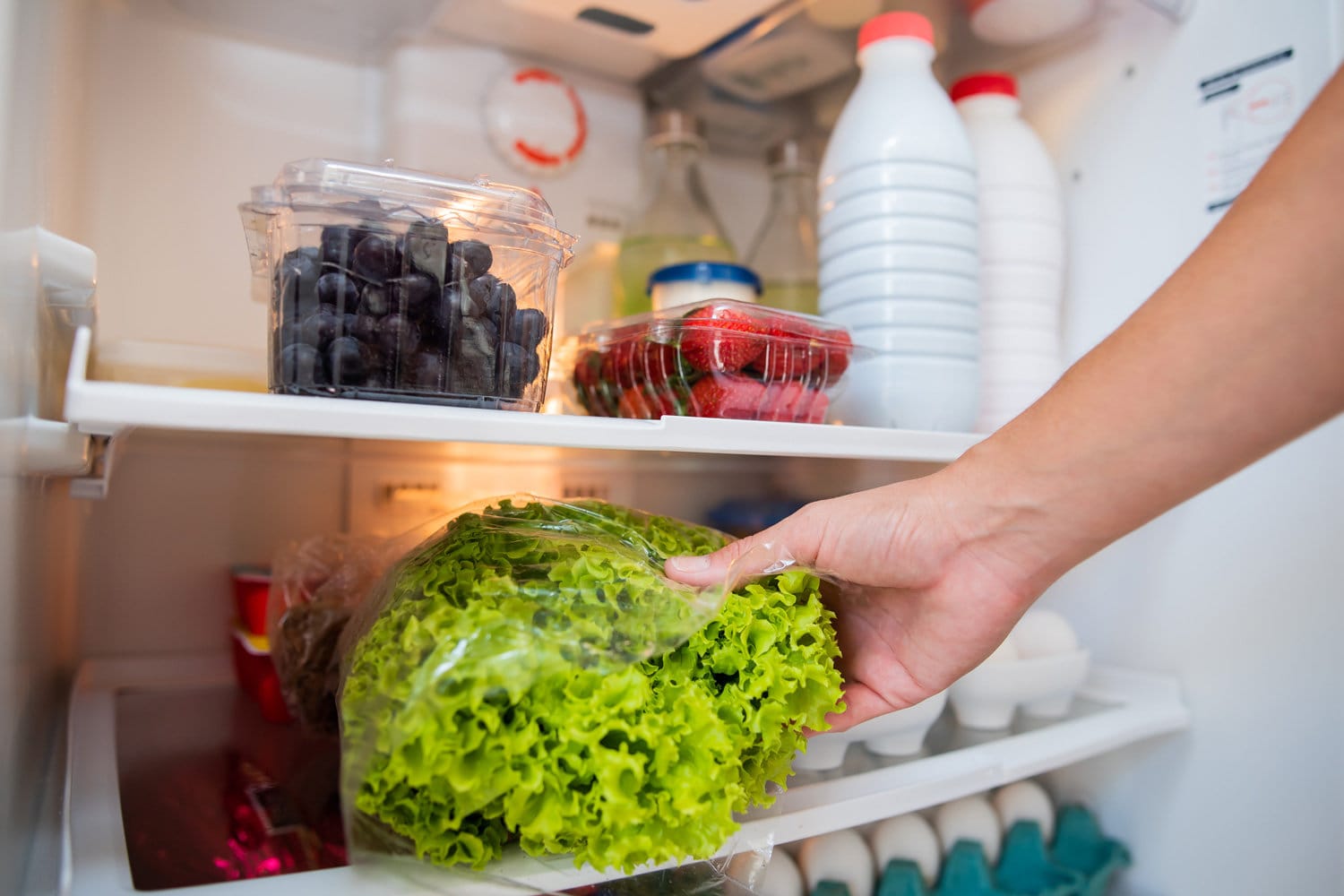
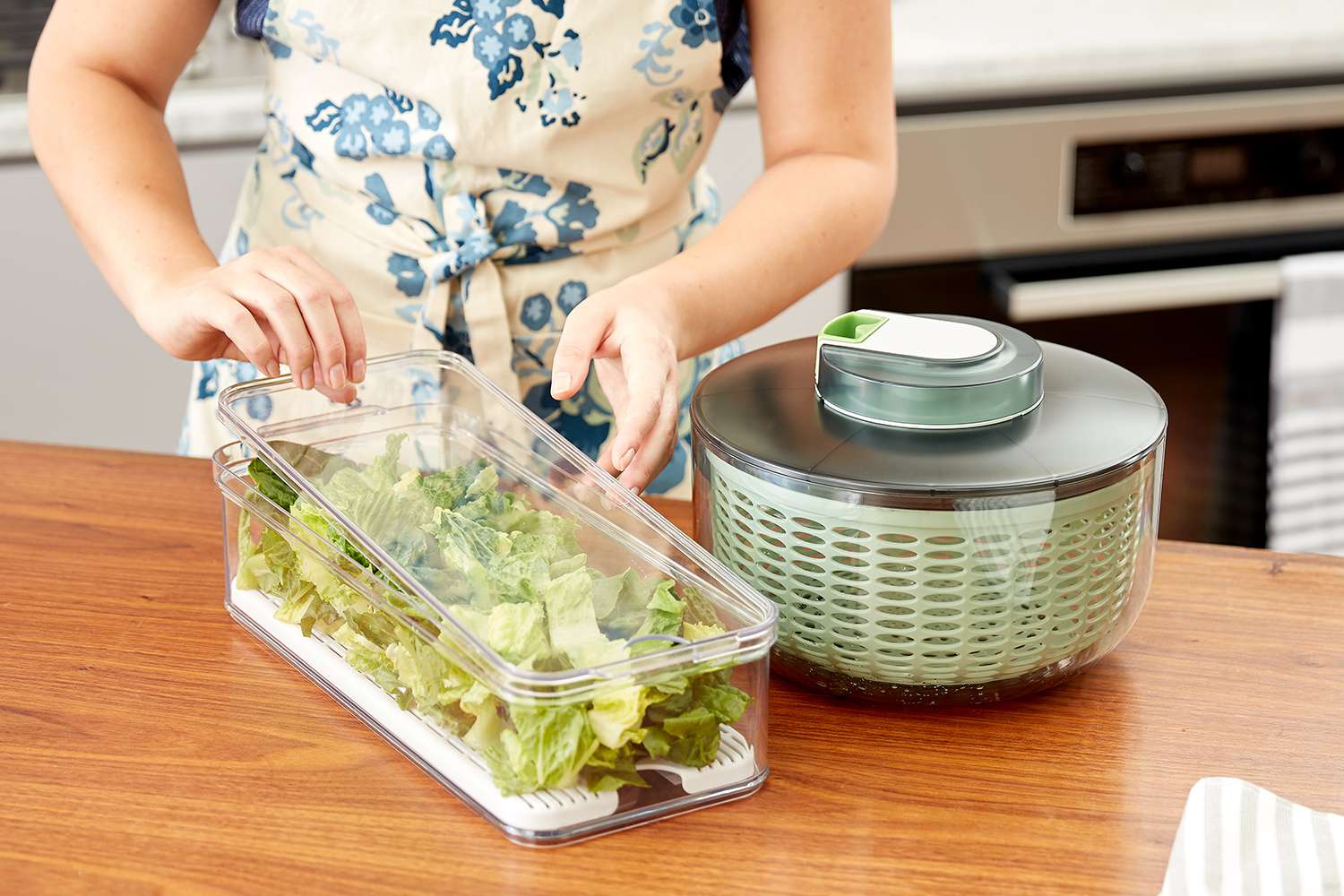




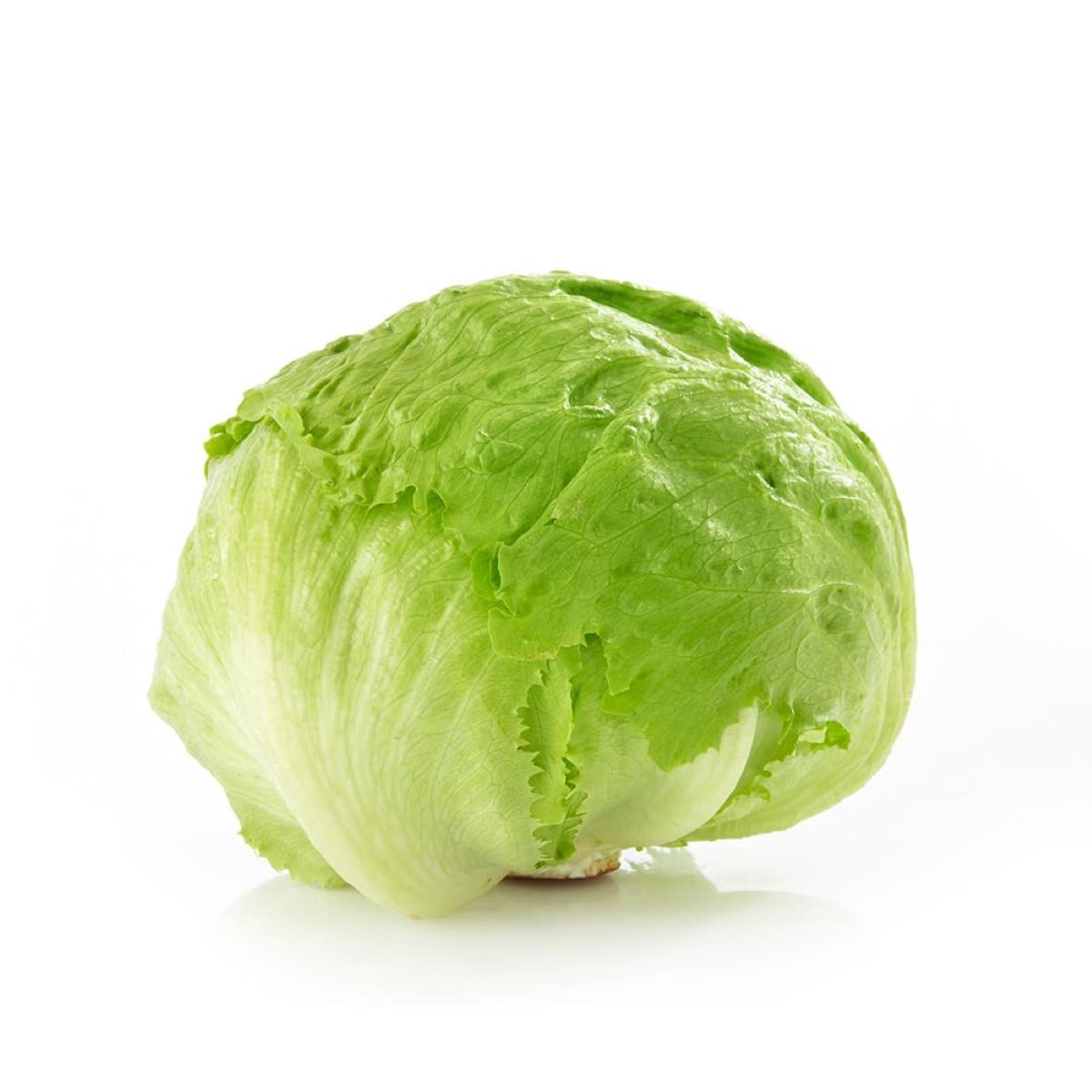



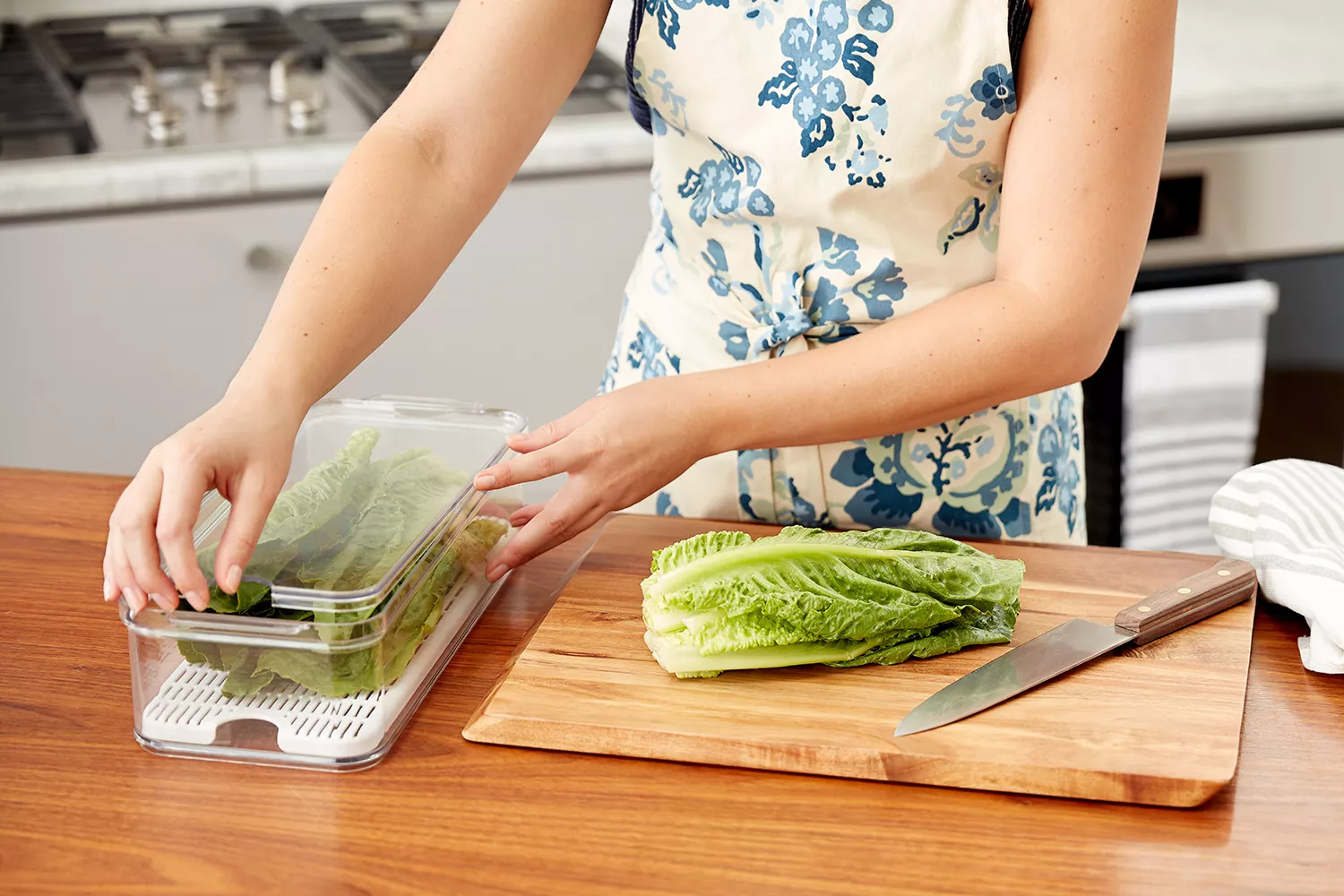
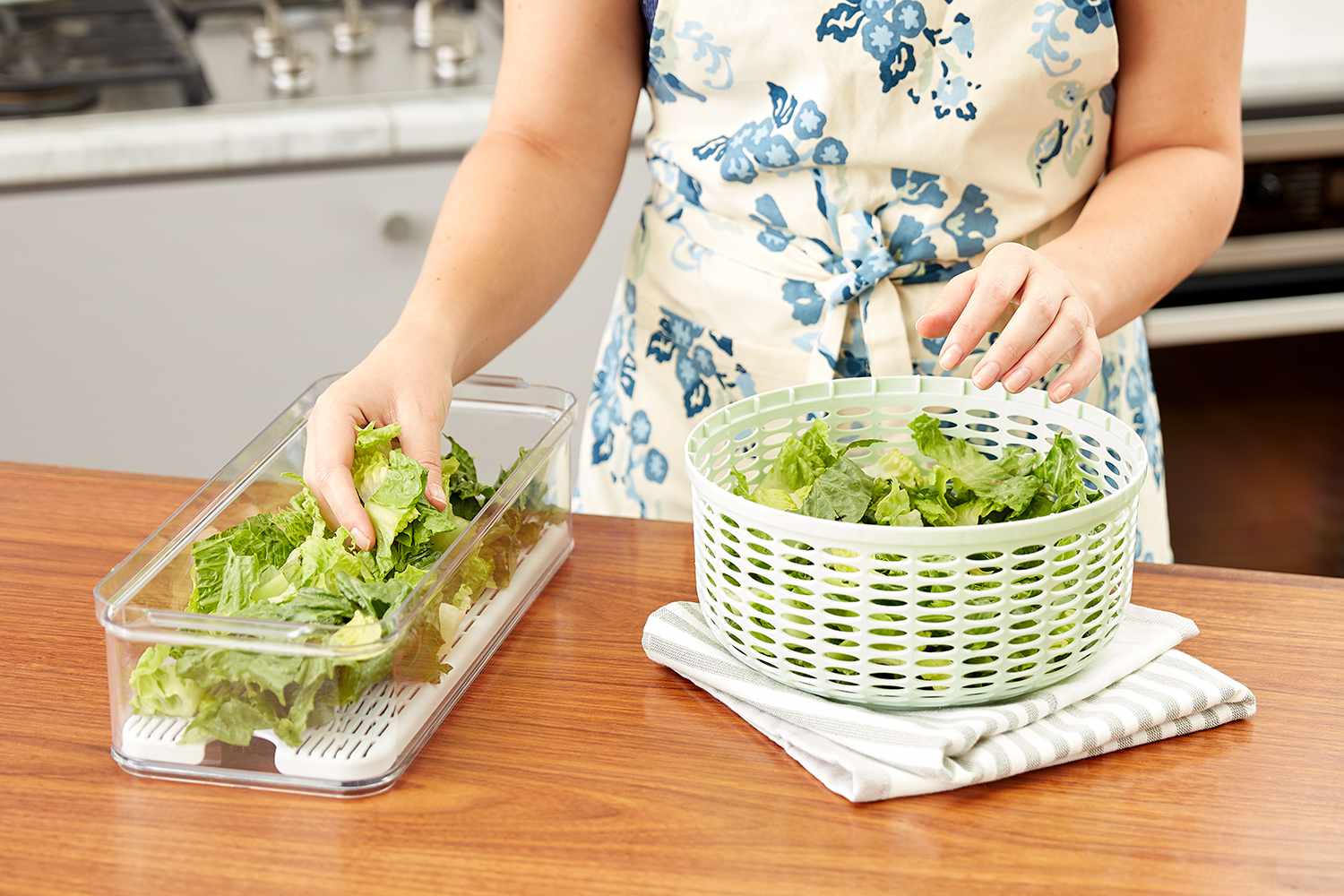
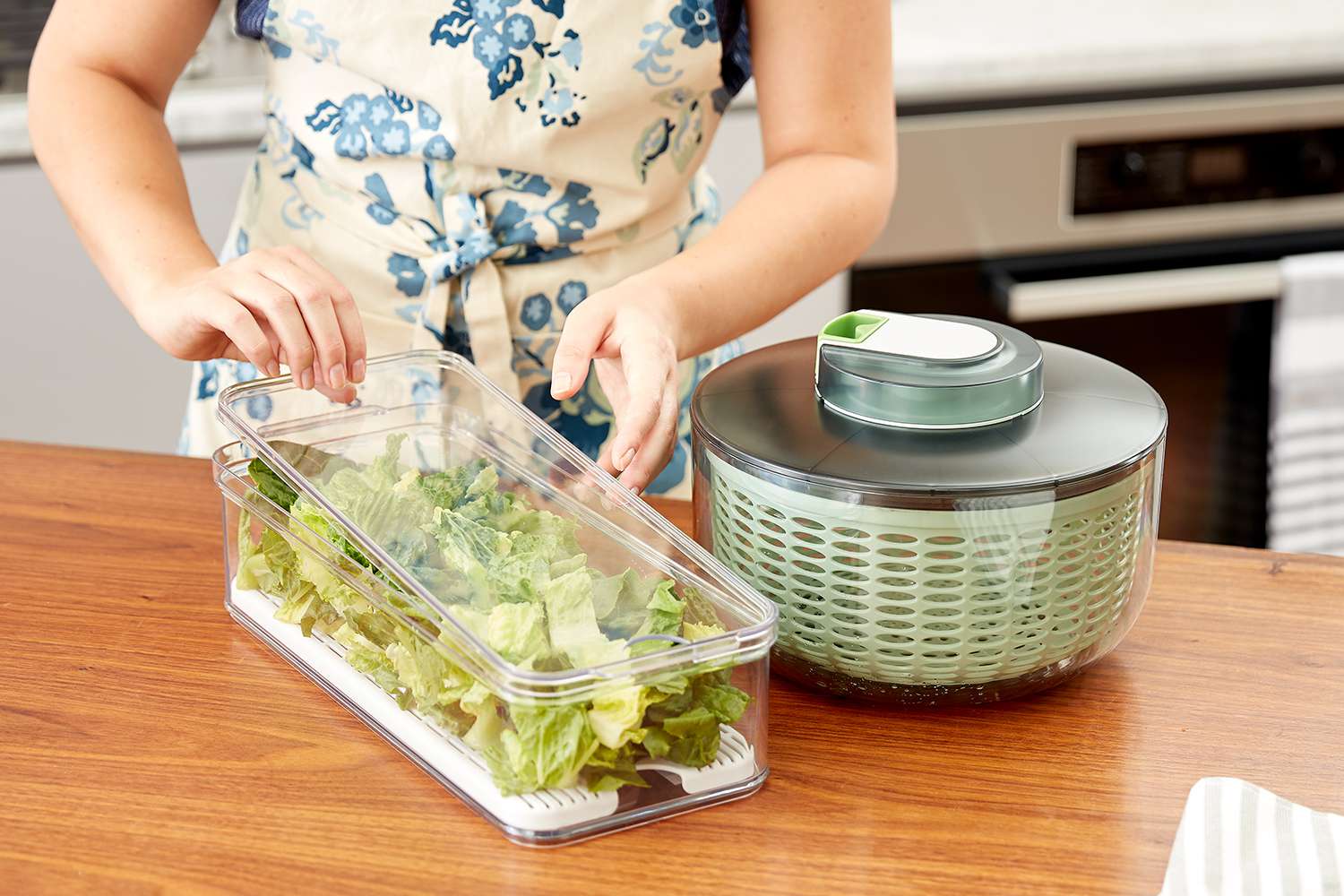

0 thoughts on “How To Store Iceburg Lettuce”